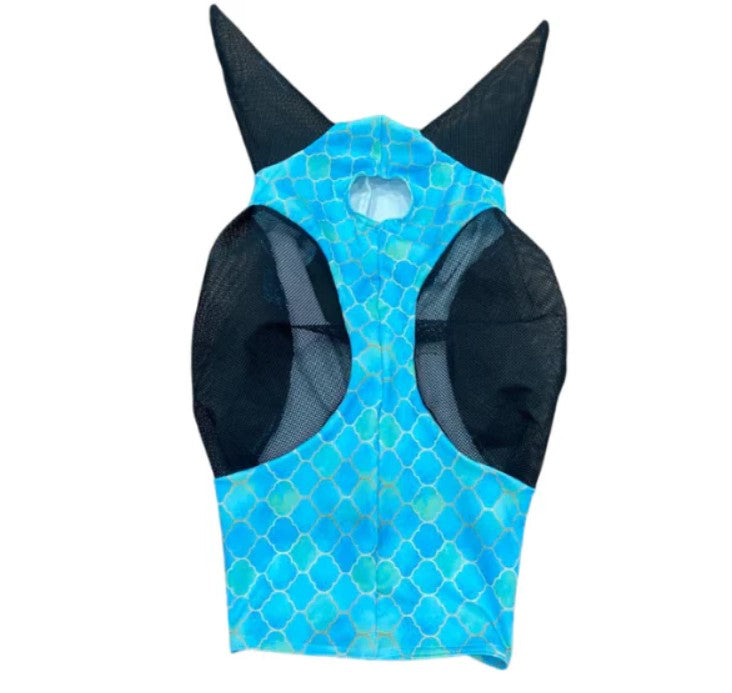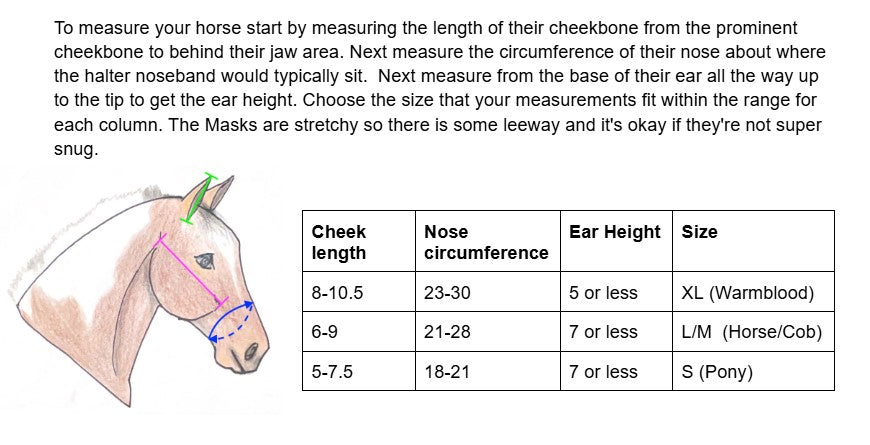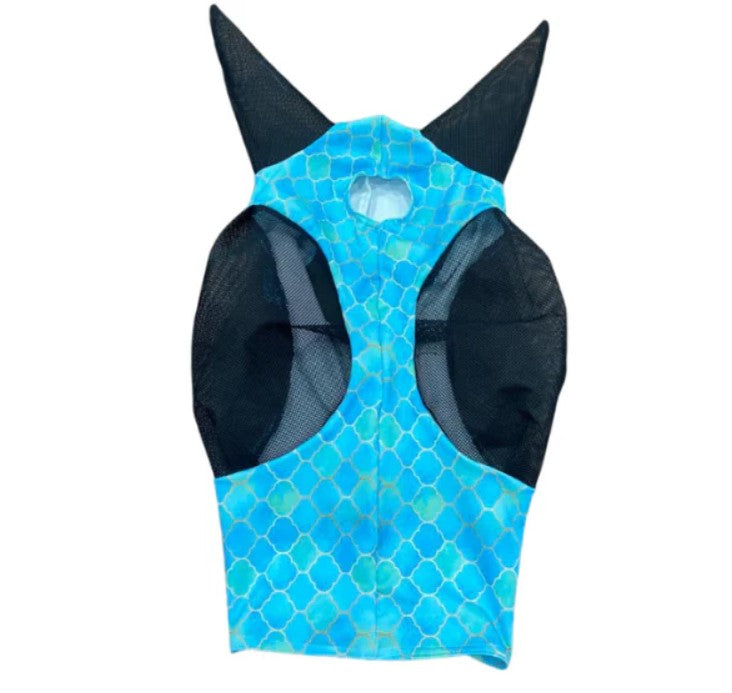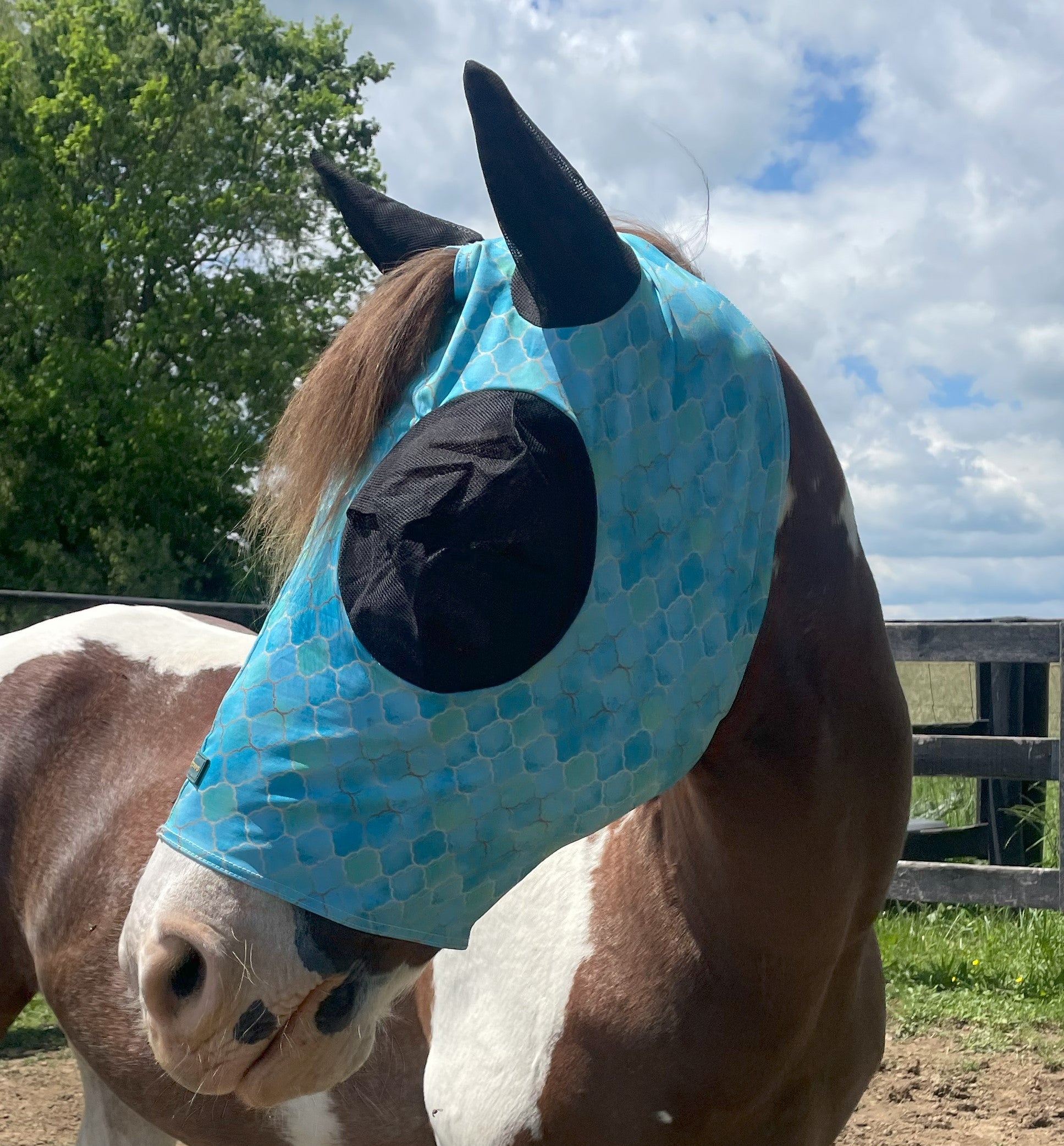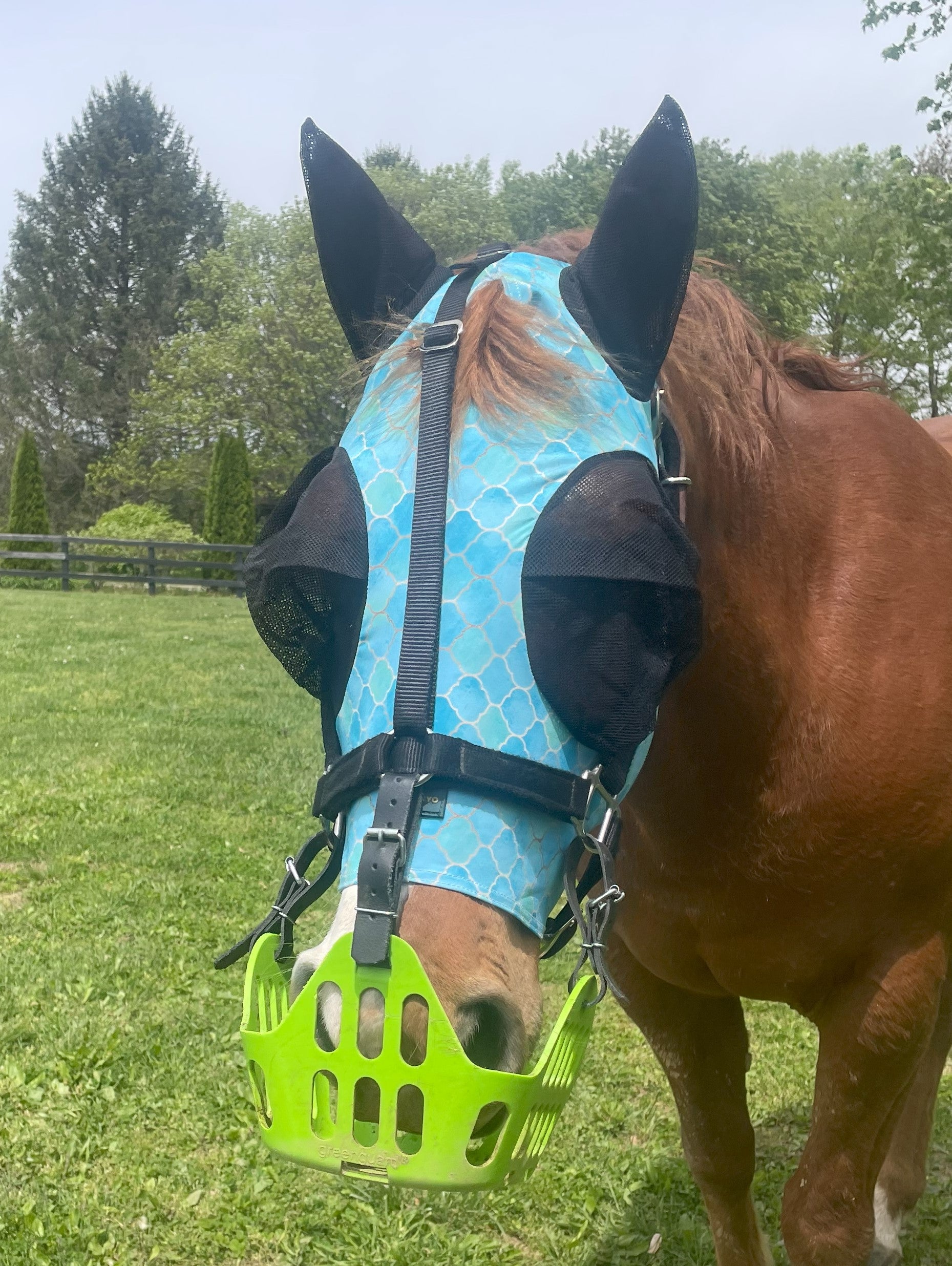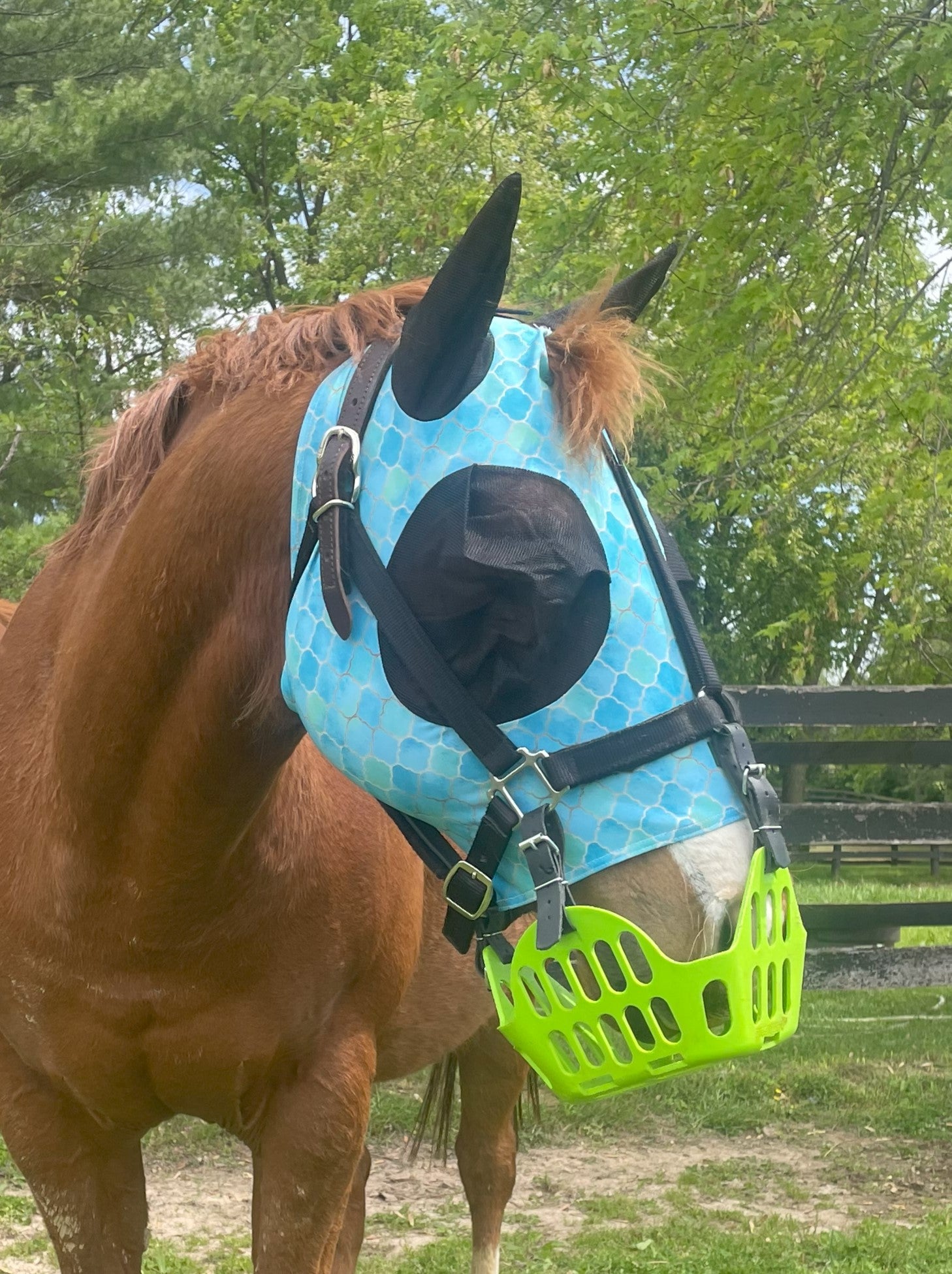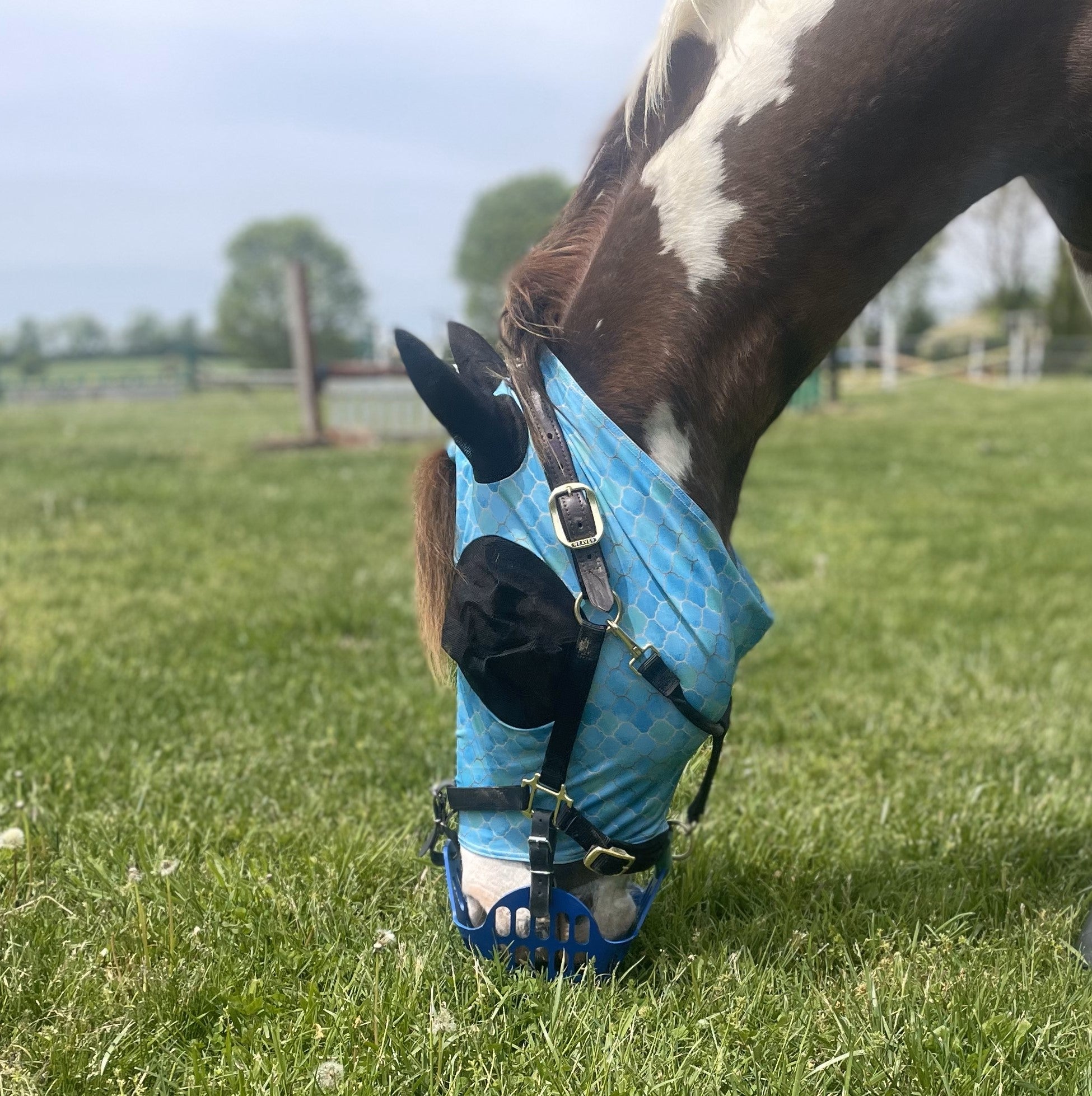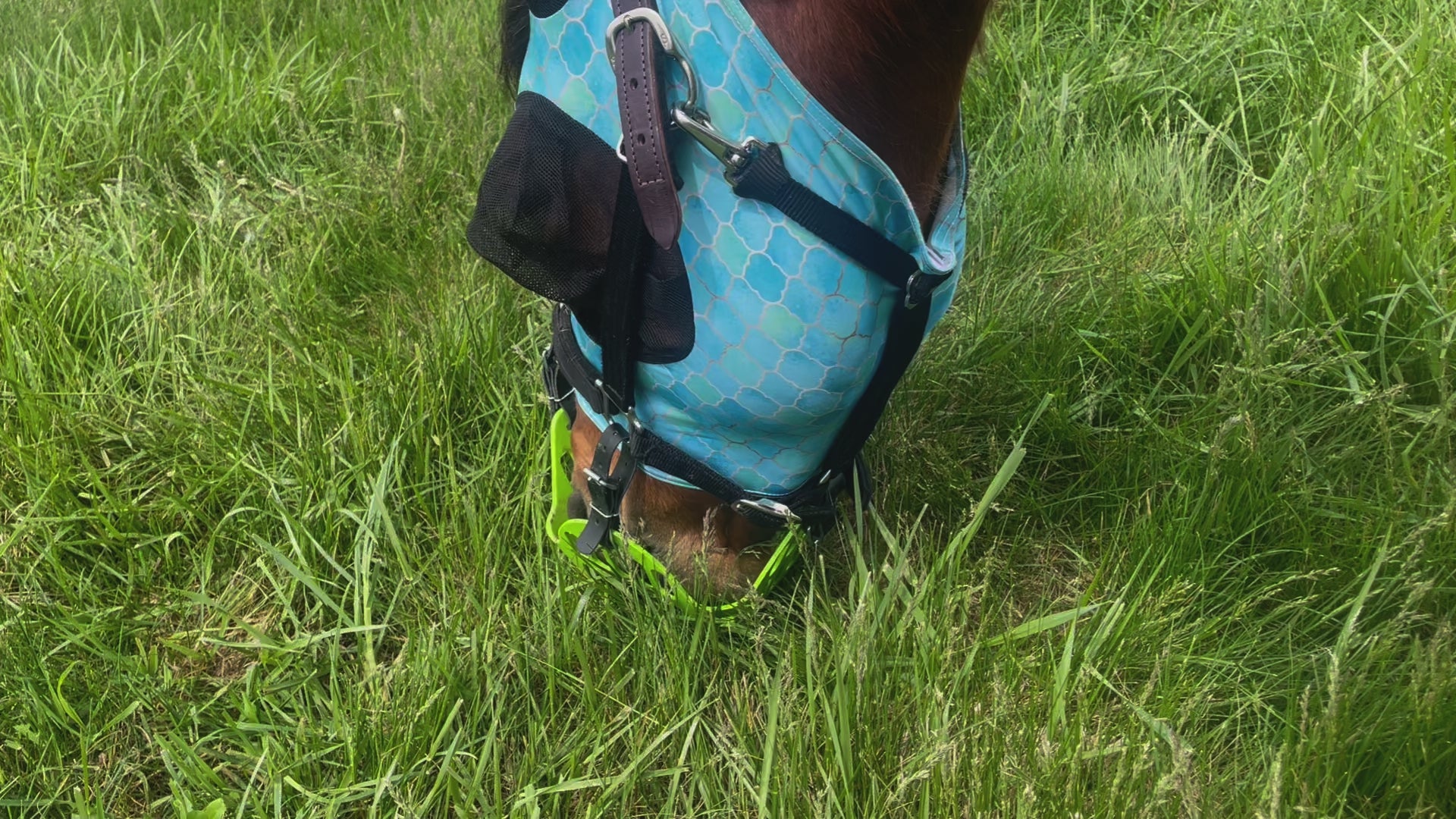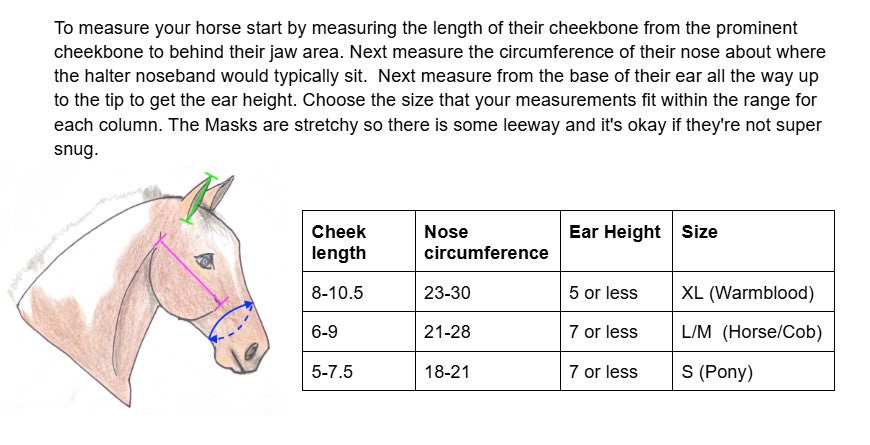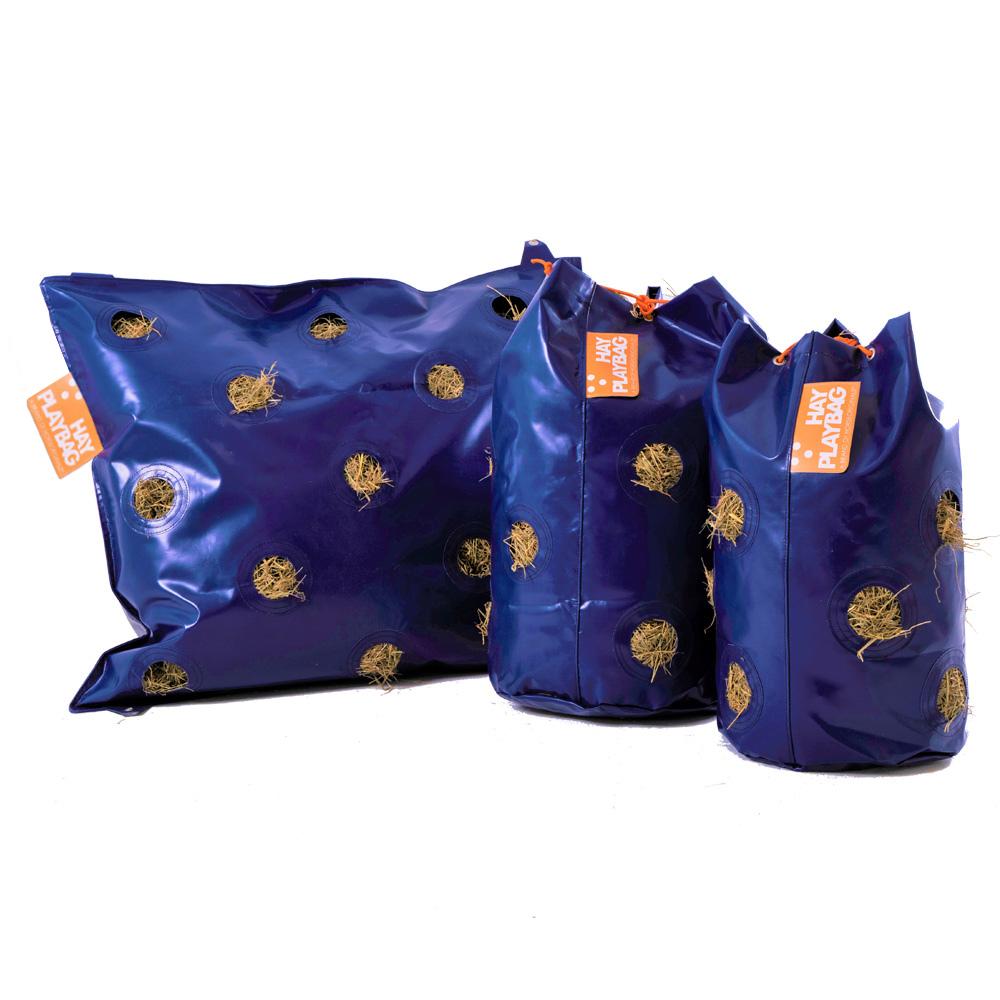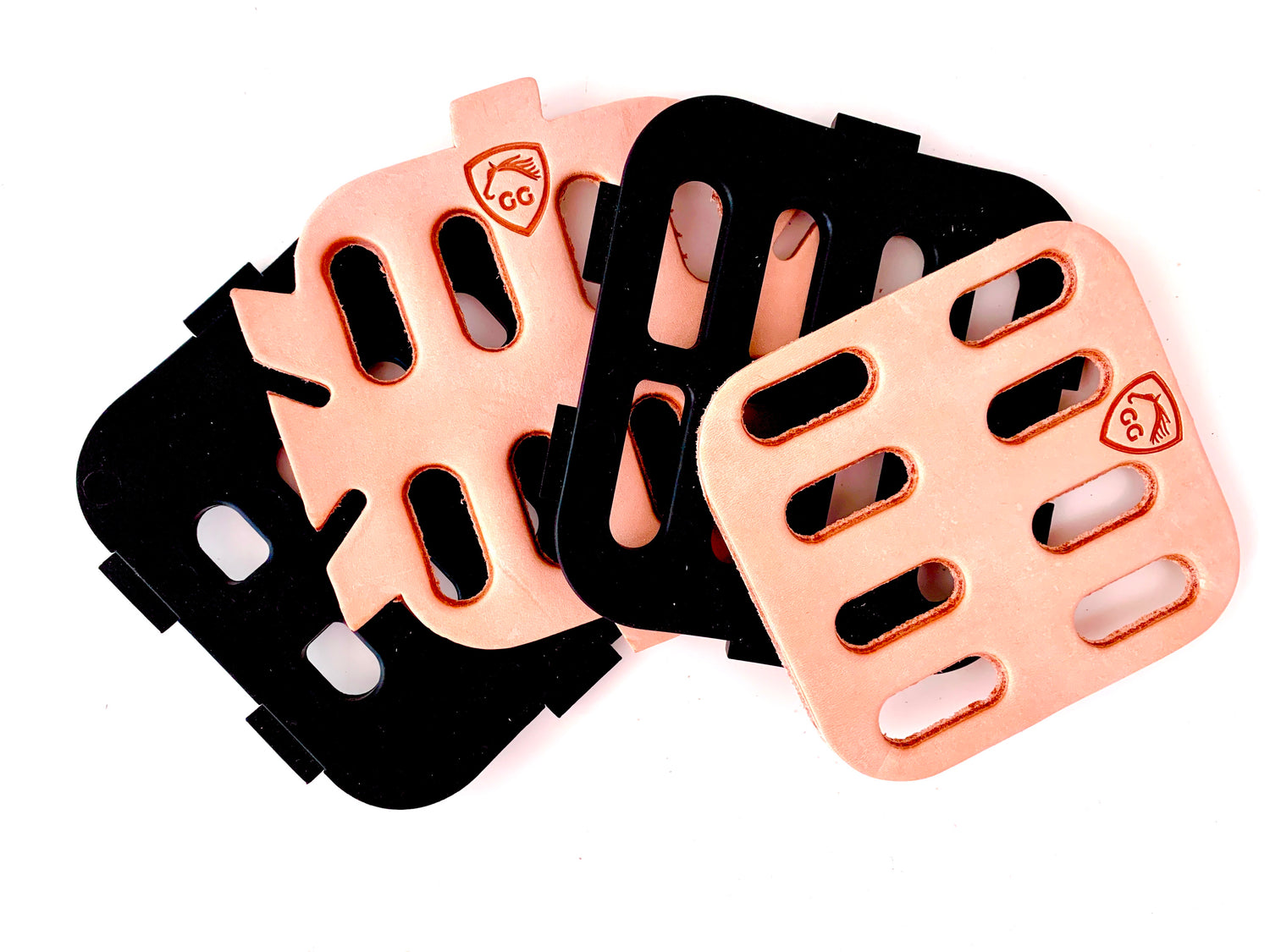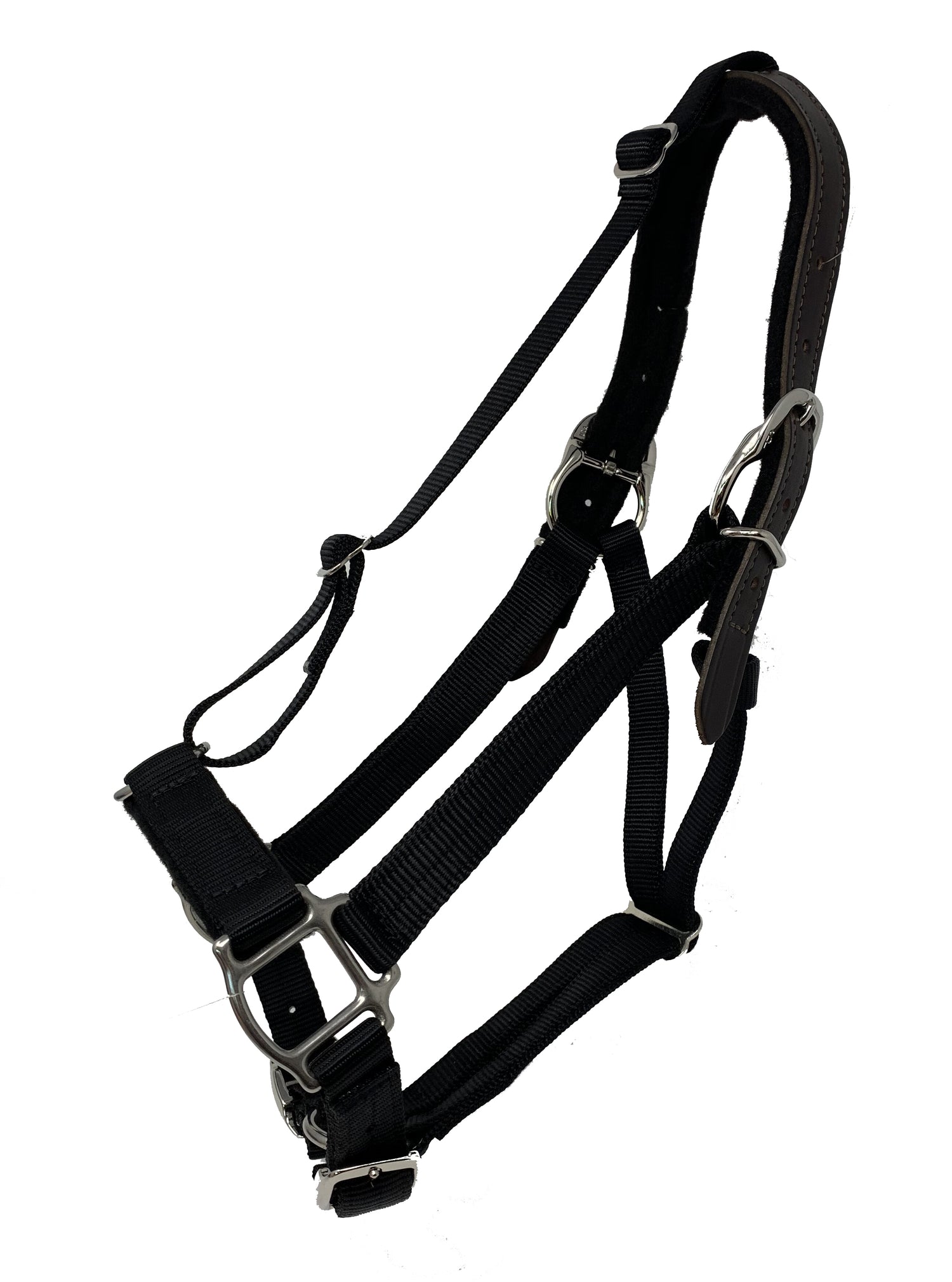Bug season seems to last forever, and using fly and sun protection is always helpful to your horse. Lycra fly masks keep insects away from eyes and ears and help provide some UV protection, too. These stretchy horse fly masks, also called fly veils or insect veils, have many practical advantages and are easy to wash.
The bug eye fly mask design
Part of the appeal of these lycra fly masks is the design. The stretch fabric fits better than traditional, stiff fly masks, which conform to your horse's face for a comfortable fit.
Stretch fabric and mesh netting for eyes and long-eared styles
The bug-eye design with mesh net fabric protects your horse's eyes from irritating bugs while allowing for clear vision and ear protection. The spherical shape of the mesh stays far away from your horse's eye for protection but is soft should your horse rub their face on their leg.

Lightweight protection from insects: flies, midges, mosquitos, and gnats.
Protecting horses from flies is essential for their well-being and comfort. Flies can be highly bothersome to horses, causing irritation and allergic reactions like sweet itch, hives, and other skin irritations that often itch.
A safe fly mask is part of your horse's insect protection plan and protects their sensitive ears and eyes. Many insects, like the midges and gnats that cause sweet itch, prefer to feast on your horse from the top side, especially around the mane and ears. Covering these areas is the first line of defense.
Some skin conditions, like aural plaques in horse's ears, are thought to result from viruses transmitted by flies. Using long-eared masks reduces this likelihood.
Sun protection - blocking UV rays
The lightweight fabric remains cool in warmer weather, and the stretch of lycra and nylon moves with your horse without shifting as they chew and move through their day. These slippery fabrics are also durable and will not cause discomfort or itching.
There is UV protection provided, too. The netting itself typically blocks 30-40% of UV rays. Sun damage can lead to painful burns, especially on noses and faces with white hair and pink skin. Pairing a fly mask with sunscreen suitable for horses on muzzles is ideal. Zinc oxide works well and has staying power, and it's easy to see when the dense white cream needs reapplication.
Nylon fly mask myth-busting
It's also a myth that lycra fly masks are hot! Because they are so close to the skin, if your horse sweats, the fabric efficiently wicks the moisture for fast evaporation and cooling. No warm air is trapped, as with a traditional fly mask that sits away from their face.

Lycra bug masks are durable and easily washed
Slinky fly masks use fabric that resists tears and frays and is easy to wash.
Hand or machine washing is excellent for cleaning these bug-eye fly masks. Use a gentle detergent and hand wash or gently cycle in a washing machine.
The slick fabric dries quickly, so air drying is excellent if you wash at the barn.
As your horse wears their spandex mask more often, the shape may change, increasing comfort.
How to fit a nylon fly mask - no zipper needed
Properly fitting a lycra fly mask on your horse is crucial to ensure its effectiveness and comfort, and it's also quite simple. Here are some steps to help you achieve a perfect fit:
Use your horse's halter and bridle size as a starting point. This could be a pony, cob, horse, warmblood, or draft size. You may also find small, medium, and large designations.
The beauty and flexibility of lycra fabric are due to the custom-fitting stretch. A warmblood could likely wear the horse and the draft size, while a large pony could wear a pony or cob size.
You can always measure your horse and talk to the manufacturer for recommendations.
Look for styles with extra long noses and additional fabric behind the ears for a secure fit and more UV sun protection.
How to put on a lycra fly mask
Putting a bug eye fly mask on your horse is similar to putting a sock on another person. Just take a few simple steps, and your horse will be ready to go. There are no straps or velcro pieces to attach.
Gather the fabric to create a short tube between the nose and neck opening.
Slide your fly mask tube over the nose.
Begin to extend the fabric over their face.
Sweep behind the jaw to tuck the mask near the throat latch.
Pull the remaining fabric over their crown and tuck their ears in.
The forelock can come through the opening for a smooth finish.
Make any adjustments, and your horse will be ready to go!

Using lycra fly masks with a halter or other tack
Use lycra fly masks with other equine gear to provide comprehensive protection for your horse. They are compatible with breakaway halters, allowing you to keep the mask securely in place during turnout or while riding. Additionally, they work perfectly with grazing muzzles.
Compatibility with grazing muzzles
Grazing muzzles are commonly used to limit a horse's intake of grass while turned out for health reasons and to help a horse maintain a healthy weight.
Using a fly mask under a grazing muzzle and halter allows your horse to enjoy their turnout and grazing time, plus have comfortable fly protection.
The bonus is the slinky fly mask protects your horse's skin from halter rubs. These annoying hairless patches can turn into painful sores. They are similar to a blister forming when moisture and friction come together. In the case of halters, friction occurs when your horse moves and there's a bit of sweat under the halter's pieces.
You often see halter rubs behind and under the ears and across the nose where the noseband rests. Using a slinky bug mask with extra fabric around the ears and nose helps prevent painful rubs from starting.
What if you don't need the fly protection but want to prevent tack rubs?
You can unstitch the fine mesh netting fabric from the nylon with a seam ripper. And you are done! Using the fabric as a mask without the ear and eye coverings is fine if you don't need them.
Safety considerations
Watching your horse when first trying any new tack or equipment is a great idea.
Ensure your horse doesn't rub on their legs or a fence and twist anything and that any halter worn over the top is breakaway.
Also, please keep your eyes peeled for the signs and smells telling you it's time to do some laundry. Using a gentle laundry detergent with extra rinsing reduces the likelihood of an allergic reaction to any laundry soap.
You may not want your horse to wear fly protection during wet weather. The bugs won't bother your horse, so your horse could go without.
Wearing a fly mask that gets wet in warmer weather is usually fine as the lycra styles dry quickly. But, if the weather is colder, skip the fly protection all together as you don't want any wet fabric on your horse.

Can horses wear slinky fly masks overnight?
They certainly can if you are sure your horse will resist twisting it around or pulling it off. There is always a risk with horses, and minimize that risk if your horse doesn't love the mask or if it's causing them discomfort. Use them under supervision before you decide to leave them overnight.
Can lycra fly masks cause overheating?
They do not, as the fabric is breathable and comfortable. They also wick sweat away for fast evaporative cooling. And because the ear and eye areas are mesh covered, there is plenty of airflow where needed.


